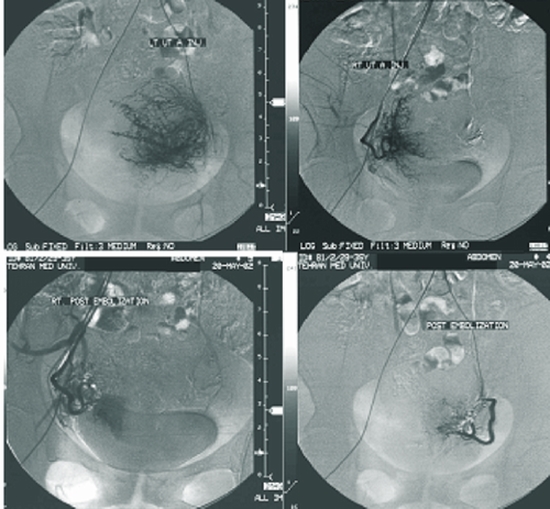Uterine artery embolization for symptomatic uterine fibroids: prospective study on 102 patients in Iran

To evaluate the safety, efficacy an d complication rate of uterine artery embolization in symptomatic fibroid patients in Iran. Patients and
A hundred and two patients aged 20-48 years (mean age: 35.7 ±6.4 years) with symptomatic fibroids entered th e study from September 2001 to November 2004. The most common presenting symptom was increased menstrual bleeding, which occurred in 74.5% of all patients. Urinary symptoms occurred in 43%, and bulk-related symptoms were seen in 63.7 % of our patients. We performed bilateral UAE (uterine artery em bolization) using PVA (pol yvinyl alcohol) particles (500-710 micron) and assessed the patients before UAE and at regular follow- ups at 1, 3, 6 and 12-month intervals by questionnaires / interviews and ultrasound. MRI without gadolinium (Gd-DTPA) injection was done before emboliz ation and at 6 and 12 months after the procedure.
By Friedman test, sequential follow-up (up to 12 months) showed that the vaginal bleeding severity significantly decreased (p <0.0001), with menorrhagia resolving in 59.4% of patients at 1 month, and in 69% at 12 months. The mean uterus volume decreased 38.5 ±30% after 12 months. The paired t-test showed that dominant fibroid volume changed from 273.7±439.2 cm3 to 112.1±141.6 cm3 at month 6 (n=58, p=0.001) and from 246.1±314.5 cm3 to 70.1±73.5 cm3 at month 12 (n=41, p<0.0001). The initial size of the fibroids did not affect the success rate.
The study showed the high efficacy of UAE in controlling fibroid related symptoms, with only few complications.






comment